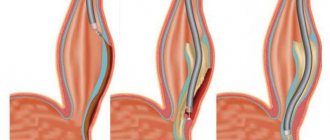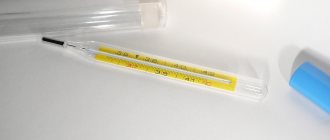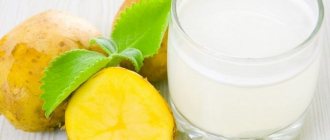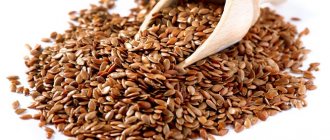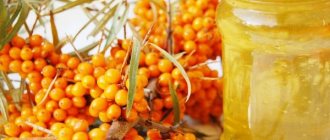Temperature during gastritis is a response of our body. Its appearance indicates that a person’s well-being has sharply deteriorated, so he needs to take care of his health.
There are many symptoms of gastritis and ulcers that indicate the presence of this disease. But only a doctor can confirm the diagnosis after a series of examinations. However, among the most common signs of the disease there is no increase in fever, that is, this symptom is not characteristic of both gastritis and stomach ulcers. An increase in temperature with gastritis still sometimes occurs. This indicates that the disease has worsened.
Causes of hyperthermia in gastritis
In the chronic form of gastritis, body temperature usually remains within normal limits, sometimes a slight increase to 37 °C is observed. Low-grade fever is characteristic of the acute course of the disease. Its main reasons are:
- Development of the bacterial environment.
- Spread of the pathological process to nearby organs.
- Involvement of the vascular wall in the process. The condition may become more complicated with thrombosis.
- The body's reaction to illness when an allergic symptom occurs.
- Suppuration or death of the epithelium of the gastric layer.
- The appearance of ulcers, when the lining of the stomach becomes covered with bleeding formations. In this case, a person may also be bothered by hemoptysis.
Addiction to bad habits, dietary errors and stress can lead to a chronic form of the disease.
The structure of the digestive system
To understand what digestion is, it is necessary to consider the structure and functions of the digestive system.
It consists of organs and departments:
- oral cavity and salivary glands;
- pharynx;
- esophagus;
- stomach;
- small intestine;
- colon;
- liver;
- pancreas.
The listed organs are structurally interconnected and represent a kind of tube, 7–9 meters long. But the organs are laid out so compactly that with the help of loops and bends they are located from the oral cavity to the anus.
The main function of the digestive process is to digest food and gradually process it in the body to form nutrients that are absorbed into the lymph and blood.
But besides this, digestion performs a number of other important tasks:
- motor or motor is responsible for grinding food, mixing with the secretions of the digestive glands and further movement through the gastrointestinal tract;
- secretory ensures the breakdown of nutritional components into mucous membranes, electrolytes, monomers and final metabolic products;
- absorption promotes the movement of nutrients from the tract cavity into the blood and lymph;
- protective consists of creating barriers using the mucous membrane;
- excretory removes toxic substances and foreign bodies from the body;
- endocrine produces biologically active substances to regulate digestive functions;
- Vitamin-forming ensures the production of vitamins B and K.
Digestive functions include sensory, motor, secretory and absorption. Among non-digestive tasks, scientists distinguish protective, metabolic, excretory and endocrine.
Signs of gastritis
The temperature of both adults and children can rise for various reasons. That is why it is necessary to know the symptoms of gastritis in order to correctly differentiate the pathology from other ailments. Typical signs:
- The presence of pain in the stomach area. It can have a different pattern of occurrence, but usually the symptoms worsen after eating.
- Constant nausea and vomiting. Unpleasant feelings of nausea can occur on an empty stomach. Vomiting occurs after eating, bringing minor relief; vomit most often consists of consumed food.
- Lack of appetite.
- Heartburn, belching.
- Weakness, intoxication.
- Abnormal bowel movements: constipation, diarrhea.
Symptoms may vary depending on the type of stomach acidity:
- Increased acidity is characterized by the presence of heartburn, sour belching, and nausea.
- Low acidity is expressed in the presence of a rotten taste, vomiting, and nausea.
- Acute secretory insufficiency can combine these symptoms. In addition to this, the patient experiences weight loss.
Features of the large intestine
The stages of human digestion in the oral cavity, where the grinding of food for further processing begins, are important processes. Products interact with saliva, microorganisms and enzymes, after which the taste of food appears and starchy substances are broken down into sugars. The processing process involves teeth and tongue.
Partially digested food, along with gastric juice, moves in small portions into the small intestine. This is where more important digestive cycles take place. Intestinal juice consists of an alkaline environment due to the intake of bile, secretions of the intestinal walls and pancreatic juice. The digestion process in the intestines may slow down due to a lack of lactase, which hydrolyzes milk sugar.
During digestion, the duodenum receives bile formed in the liver. Due to the compounds of bile and pancreatic juice, proteins and polypeptides are broken down into simple particles: elastase, aminopeptidase, trypsin, carboxypeptidase and chymotrypsin. They are absorbed into the intestines.
The remains of undigested food enter the large intestine. They stay in it for 10 – 15 hours. During this period, water absorption and microbial metabolization of nutrients occur. Thanks to the microflora of the large intestine, dietary fiber, which is classified as indigestible biochemical components, is destroyed in this section.
Among them are:
- wax,
- resin,
- gum,
- fiber,
- lignin,
- hemicellulose.
Feces are formed in the large intestine. They consist of residues that have not been digested during digestion, mucus, microbes and dead cells of the mucous membrane.
Temperature during an exacerbation of the disease
The acute form is characterized by the presence of:
- Nausea and vomiting.
- Stool disorders.
- Flatulence, discomfort in the stomach.
- Heartburn, belching, severe pain in the epigastric zone.
- The tongue acquires a gray coating, and salivation may increase.
High temperature can be observed constantly or occur intermittently . This is explained by the body’s immune response to the irritant, intoxication, and the presence of a bacterial environment. It is necessary to consult a doctor when the first symptoms of the disease appear, as the lack of treatment can lead to the development of complications.
Reduced temperature
When answering the question whether there is a low reading on a thermometer with gastritis, it is necessary to take into account the specifics of the disease. Low temperature is diagnosed quite rarely, however, this phenomenon can be observed in a patient both in the acute form and in the chronic phase.
During an exacerbation, the immune system begins to react to a potential problem, and therefore a sharp jump can occur, and then a rapid drop in temperature. In chronic cases, the decrease in the indicator is explained by exhaustion of the body, weakening of the body's defenses.
Help at home
When it is not possible to immediately get to a medical facility, you can somewhat alleviate your condition with the help of improvised means. To do this you need to perform the following steps:
- Drink plenty of fluids. An increase in temperature during gastritis is accompanied by intense loss of fluid in the body, which must be replenished. For this purpose, you can give the patient the following drinks:
- Non-carbonated mineral water corresponding to the type of gastritis in terms of acidity;
- Warm tea with the addition of cranberries, rose hips, chamomile, mint, linden, calendula flowers and St. John's wort (in the absence of contraindications to each of them);
- In case of vomiting or diarrhea, use Regidron solution.
- Bed rest . You should not do hard work, including intellectual work, as the condition may worsen. The patient needs rest;
- In the absence of clinical symptoms of digestive disorders (abdominal pain, nausea, heartburn, constipation) - a gentle diet (table No. 1 A or B);
- Moderate microclimate . It is advisable to avoid hypothermia or extreme heat, including steam baths.
Despite widespread advice about drinking hot milk with honey, you should not do this. Both of these products are contraindicated for gastritis, as they have an irritating effect on the gastric mucosa.
Child's temperature
In childhood, all diseases are more pronounced and have more pronounced symptoms. With gastritis, a child's temperature may remain around 39 °C for 3-5 days. This condition is mainly caused by dietary errors and stress.
To prevent complications, it is recommended to immediately rinse the baby’s stomach and give a sorbent, this will get rid of toxins and prevent the development of complications of intoxication.
The first signs of food poisoning are pain in the epigastric region and vomiting. If the temperature persists for a long time, it is necessary to show the child to the doctor. If a Helicobacter pylori infection is detected, which provokes the development of gastritis, antibacterial drugs are prescribed.
During the treatment period, it is recommended to follow a diet that will spare the affected stomach walls.
Why can't you lower the temperature?
Taking an antipyretic drug is advisable if the thermometer reading during exacerbation of gastritis exceeds 39 °C. When the body temperature does not rise above 38.5 °C, there is no need to bring it down with medications.
All antipyretics have a negative effect on the gastric mucosa, which can lead to a deterioration in health. If your temperature starts to rise during gastritis, you should visit a doctor. As a last resort, you can turn to traditional medicine recipes.
Drug therapy
There is no need to fight the temperature; the best way out is to treat gastritis. When it is possible to relieve inflammation of the gastric mucosa, the patient’s condition will return to normal. Therapy is selected individually depending on the level of acidity and the form of the disease. The basic rules of treatment are:
- Dieting. It is important to exclude all harmful foods: soda, pastries, coffee, fried, salty, fatty, spicy foods. In case of exacerbation, it is recommended to limit the intake of rough food for a while.
- Monitoring fluid intake. The daily volume should be at least 2 liters.
Taking medications:
- Antispasmodics for pain relief - No-shpa, Papaverine, Drotaverine.
- Sorbents for removing toxins – Smecta, Activated carbon, Enterosgel.
- Enzymes that improve digestion are indicated for pancreatitis and problems with the pancreas (these are Creon, Festal).
- Antiemetics are indicated for nausea and vomiting, such as metoclopramide.
- Proton pump inhibitors are indicated for hyperacidity. Helps reduce acid production. These are Omez, Pantokar, etc.
Important! When the inflammatory process subsides, the temperature will drop to normal levels.
Treatment options
With gastritis, the risk of developing diseases of organs close to the stomach increases significantly. At the same time, patients with gastritis often exhibit decreased immunity and develop anemia. Ideal conditions are created for bacteria to enter the body - the protective lining of the stomach is destroyed. Therefore, experts are firmly convinced that even asymptomatic gastritis, which does not bother the patient, should be treated.
Effective treatment is possible if you know the type of gastritis, what stage it is in, what pathological processes occur in the patient’s body. Non-steroidal anti-inflammatory drugs, suitable for other inflammations, will not help in the acute form, but will cause internal bleeding. It is strictly prohibited to self-prescribe medications if the temperature has risen due to an existing stomach disease or discomfort in the gastrointestinal tract. Urgent intervention is required from an experienced therapist or gastroenterologist who will diagnose and prescribe effective treatment. If there is no acute poisoning in which gastric bleeding is noted (vomiting and black stools), then treatment of gastritis is carried out at home. In case of poisoning, urgent hospitalization, gastric lavage using a special tube, and sometimes surgery are required.
What are the therapeutic recommendations of a gastroenterologist for hyperthermic gastritis?
- Following a strict gentle diet.
- Drink at least two liters of fluid per day.
- Taking medications that improve food digestion, normalize acidity, and eliminate pain.
Typically, a doctor prescribes proton pump inhibitors, sorbents, enzymes and antispasmodics. The sequence of temperature therapy for gastritis is not related to the use of antipyretics. Such medications additionally irritate the stomach and aggravate the situation. Temperatures return to normal on their own if the inflammatory process calms down.
Help from traditional medicine
When the thermometer exceeds 38 °C, it is worth helping the body cope with the problem. Reducing the temperature must be approached correctly, taking into account the stomach acidity of a person.
Folk remedies are primarily aimed at eliminating the inflammatory process and reducing pain.
- Cranberry or raspberry tea is indicated for low acidity. Grind two tablespoons of cranberries, pour boiling water over them, let it brew for 5 minutes and drink warm.
- At night you can drink warm milk with honey. This will help with high acidity.
- Herbal tea with linden is aimed at relieving inflammation and lowering temperature. 1 tbsp. pour boiling water over a spoonful of herbs, leave for 15-20 minutes in a water bath, filter, bring to the original volume and take 3-4 times a day as tea.
- For 500 ml of boiling water you need 2 tbsp. spoons of viburnum. Infuse the drink for 8-9 hours, strain it, squeezing the juice from the berries, add honey and take 100 ml 1-2 times a day. This is useful for low acidity.
To the question of whether there can be a temperature with gastritis, doctors do not have a clear answer. But as practice shows, this is possible, especially in the acute form of the disease. This is due to the inflammatory process in the mucous layer of the stomach and nearby organs.
You can bring down the temperature by treating the underlying ailment. Its decrease in this disease is rarely observed, and this is a serious signal from the body about the onset of exhaustion or a decrease in protective forces.
Action plan
The first thing a person does when the temperature starts to rise is to take antipyretic drugs, for example, Paracetamol, thereby harming themselves in this situation. It should be said that most of them belong to the group of non-steroidal anti-inflammatory drugs, which have a damaging effect, that is, on the contrary, they contribute to the appearance of gastritis.
Therefore, it is prohibited to give patients any medications, especially when the temperature rises to 38 degrees. First, you need to contact a medical institution in order to find out the exact cause of the condition. Only under this condition can symptoms be quickly and effectively relieved, preventing the development of life-threatening complications.
If the patient has no other complaints other than a slight increase in temperature, you can try to cope with this condition on your own. But if home treatment is ineffective within 1-3 days, it is advisable to consult a doctor.
